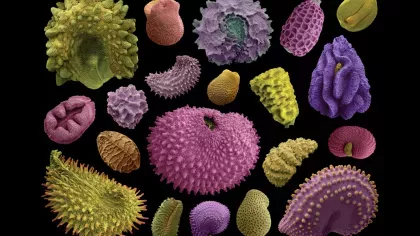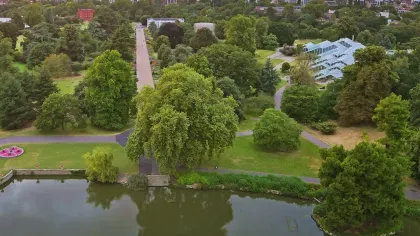6 February 2019
For the love of scrub
Ian Willey describes Kew's search for scrub species as part of the UK National Tree Seed Project.

The UK National Tree Seed Project (UKNTSP) began in 2013 with an ambition to collect and bank seed from the UK’s native tree and shrub species – securing the genetic diversity of this important group of plants. By 2018 the project had already collected over 10 million seeds from 7620 individual trees.
Thanks to funding from players of the People’s Postcode Lottery, the project has been extended for another two years (2018-2020), allowing us to continue collecting seed from outstanding targets and to also widen the scope of the project to include two new groups: native willows and seven native scrub species.
The Magnificent Seven Scrubs
Last year, in search of natural scrub, teams from Kew and partner organisations set out to find populations of seven native scrub species new to the UKNTSP:
• Hazel (Corylus avellana)
• Spindle (Euonymus europaeus)
• Alder buckthorn (Frangula alnus)
• Wild privet (Ligustrum vulgare)
• Purging puckthorn (Rhamnus cathartica)
• Wayfaring Tree (Viburnum lantana)
• Guelder-rose (Viburnum opulus)
They are characterised by their woody habit and frequent occurrence in scrub communities or as understory species in woodland. Often occurring as isolated individuals and regularly lacking sufficient seed numbers to be collected the search was sometimes difficult but an appreciation of their ecological value and relationship to humans was learnt along the way.
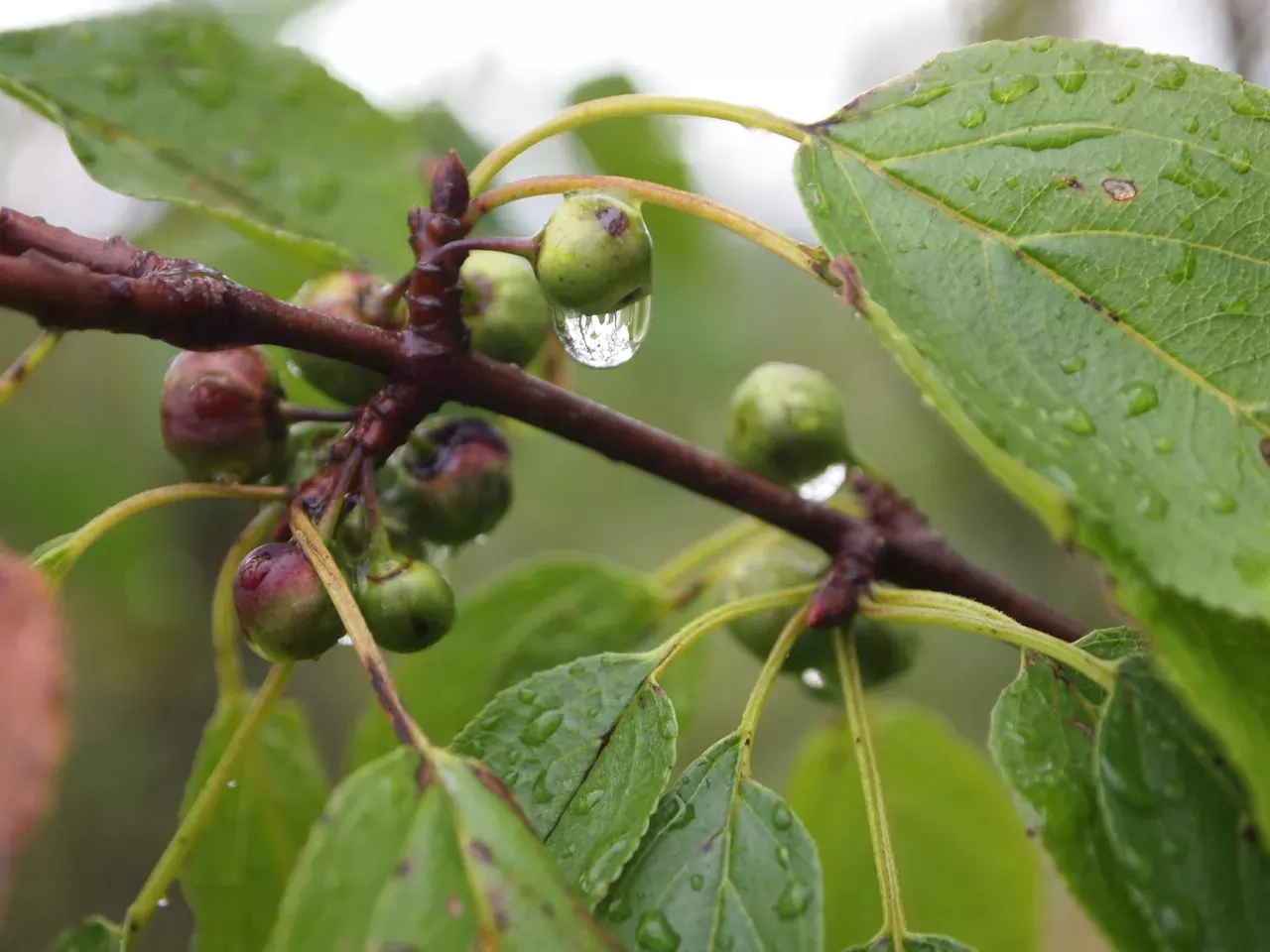
The importance of scrub
It’s fairly common for people to express a love of woodland, valuing its role in supporting a wide variety of plants, animals and fungi. Woodlands elicit a sense of calm and even the word tree is often an associate of positivity. I doubt the word “scrub” evokes similar stirrings of emotion.
Scrub is widely viewed as an intermediate stage in the development of woodland from open land, although scrub can form a stable community of its own in more extreme environments in the UK where tree growth is inhibited. Scrub can be scattered individual bushes, or an area dominated by multi-stemmed and sprawling woody plants and tree saplings reaching little beyond 5m in height.
Should we clear scrub or encourage it? Scrub communities support a wide variety of wildlife, often providing an important habitat for different assemblages of flora and fauna while offering shelter and food for invertebrates, birds and mammals. For instance, starlings and thrushes enjoy late-in-the season fruits of wild-privet, buckthorns and guelder-rose whilst hazelnuts are the favourite food of hazel dormice. In some cases, entire species are dependent upon scrub, for example purging and alder buckthorn are the exclusive larval food plants of the brimstone butterfly.
However, even diverse scrub may become undesirable when it encroaches on priority habitats such as chalk grassland. Indeed, some of the most valuable scrub habitat occurs around these encroaching edges, where woody plants and more open grassland or heath meet to provide a diverse mix of opportunities for shelter and food. Determining and maintaining the right balance is a constant dilemma for many conservation managers.
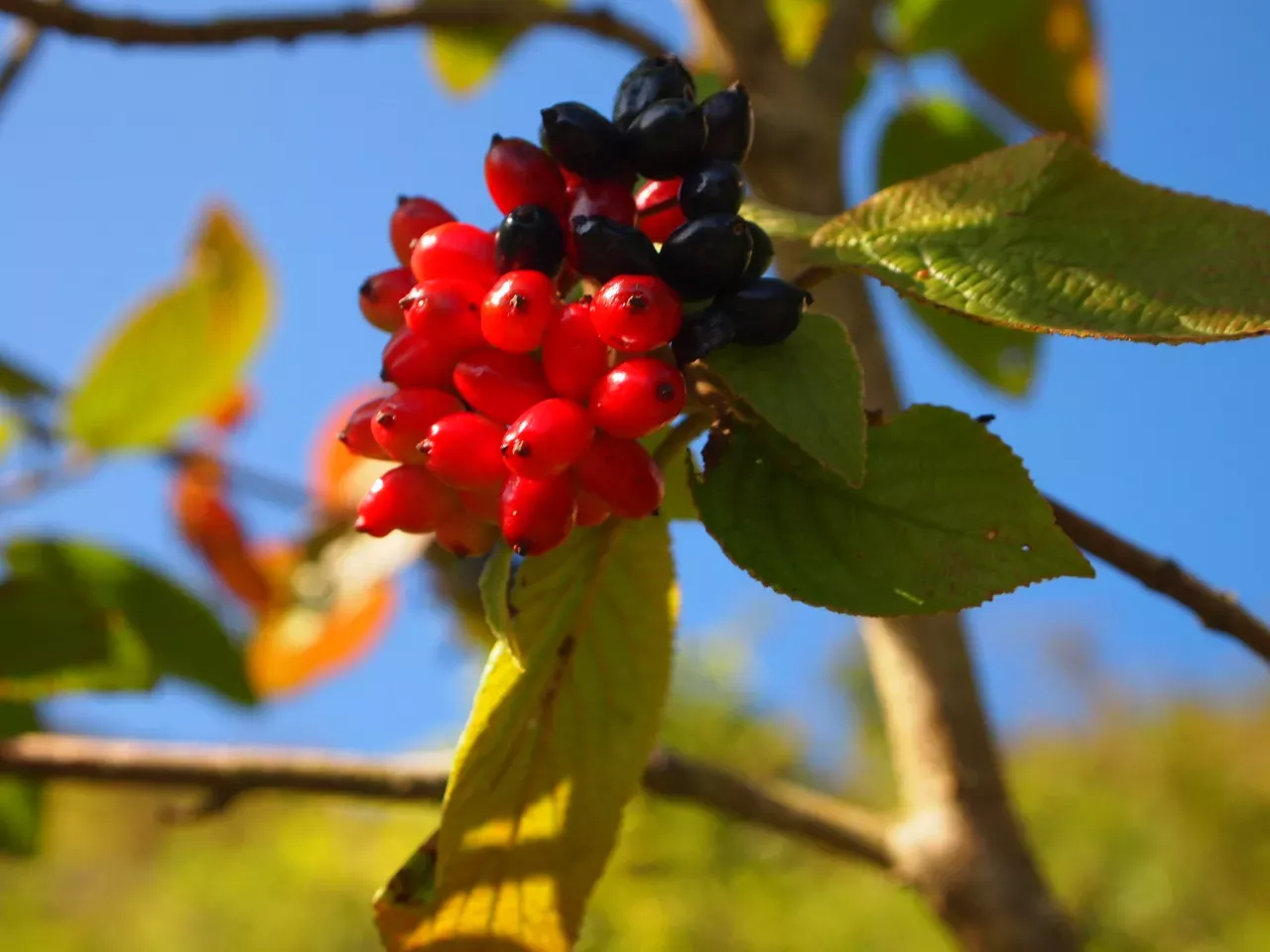
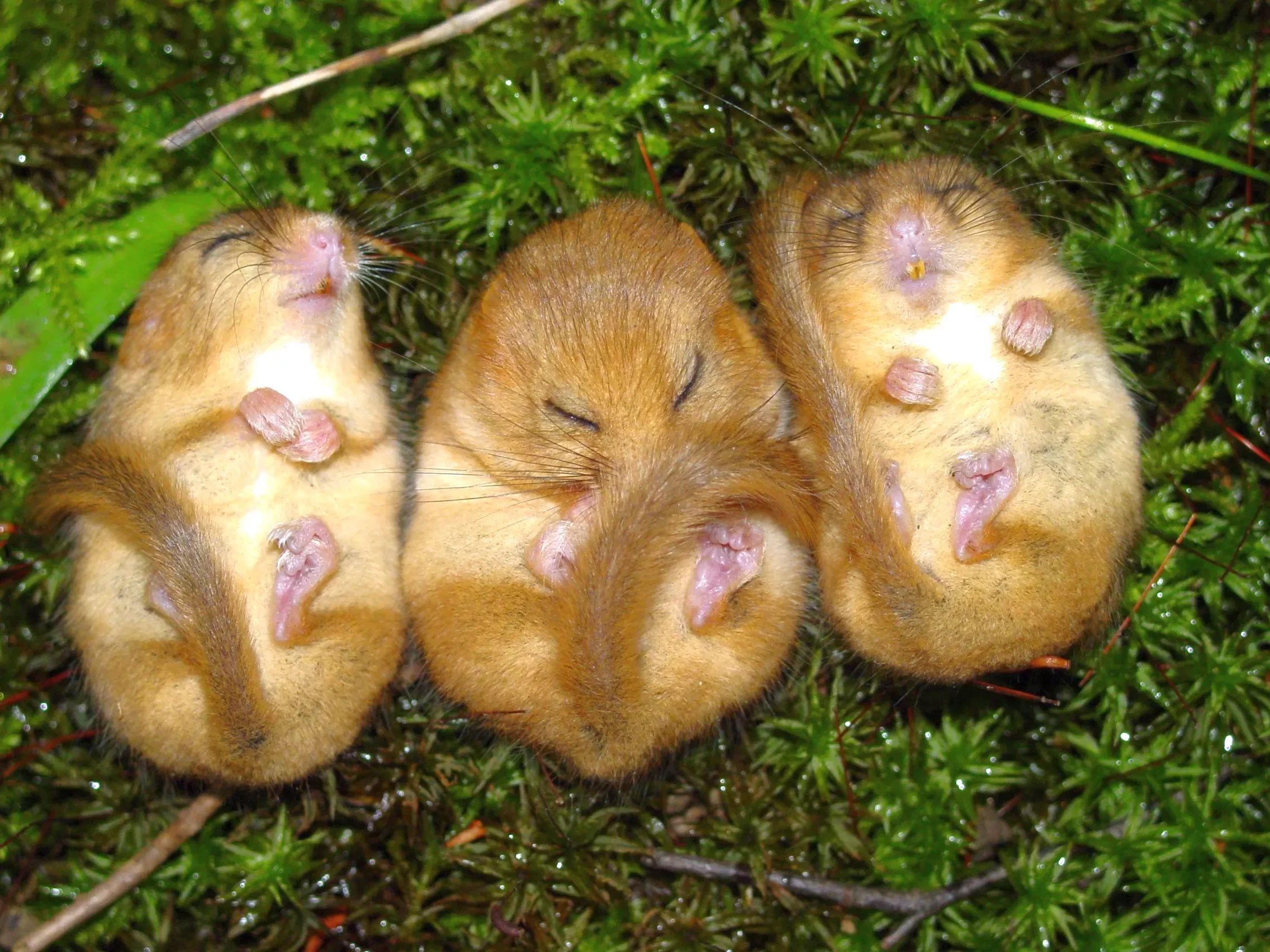
Our relationship with scrub species
Apart from hazel, all are poisonous to humans. This didn’t prevent the herbalists of old from prescribing the juice of purging buckthorn fruits to treat gout, rheumatism and oedema. It may have worked but the side effects of violent diarrhoea, nausea and abdominal pains make me appreciate it’s absence from today’s pharmacy cupboards. Not all treatments of old have been shelved however, the antispasmodic properties of guelder-rose bark mean it is still used today to treat menstrual pain.
More well known is how we use parts of plants due to the physical properties of their wood. Lento meaning “to bend” in Latin is an apt name for wayfaring tree (Viburnum lantana) as it was traditionally used for wrapping round and tying together bundles. Similarly, coppiced hazel stools have provided bendy material for fences, thatching spars, furniture and charcoal; although the award for good quality charcoal goes to alder buckthorn. The wood, when carbonized, was vital in the manufacture of explosives and in response to the shortage of home-grown alder buckthorn in 1915 RBG Kew suggested it a good idea for landowners to lay down plantations of the plant. One can only reason this was to ensure domestic supply during wartime.
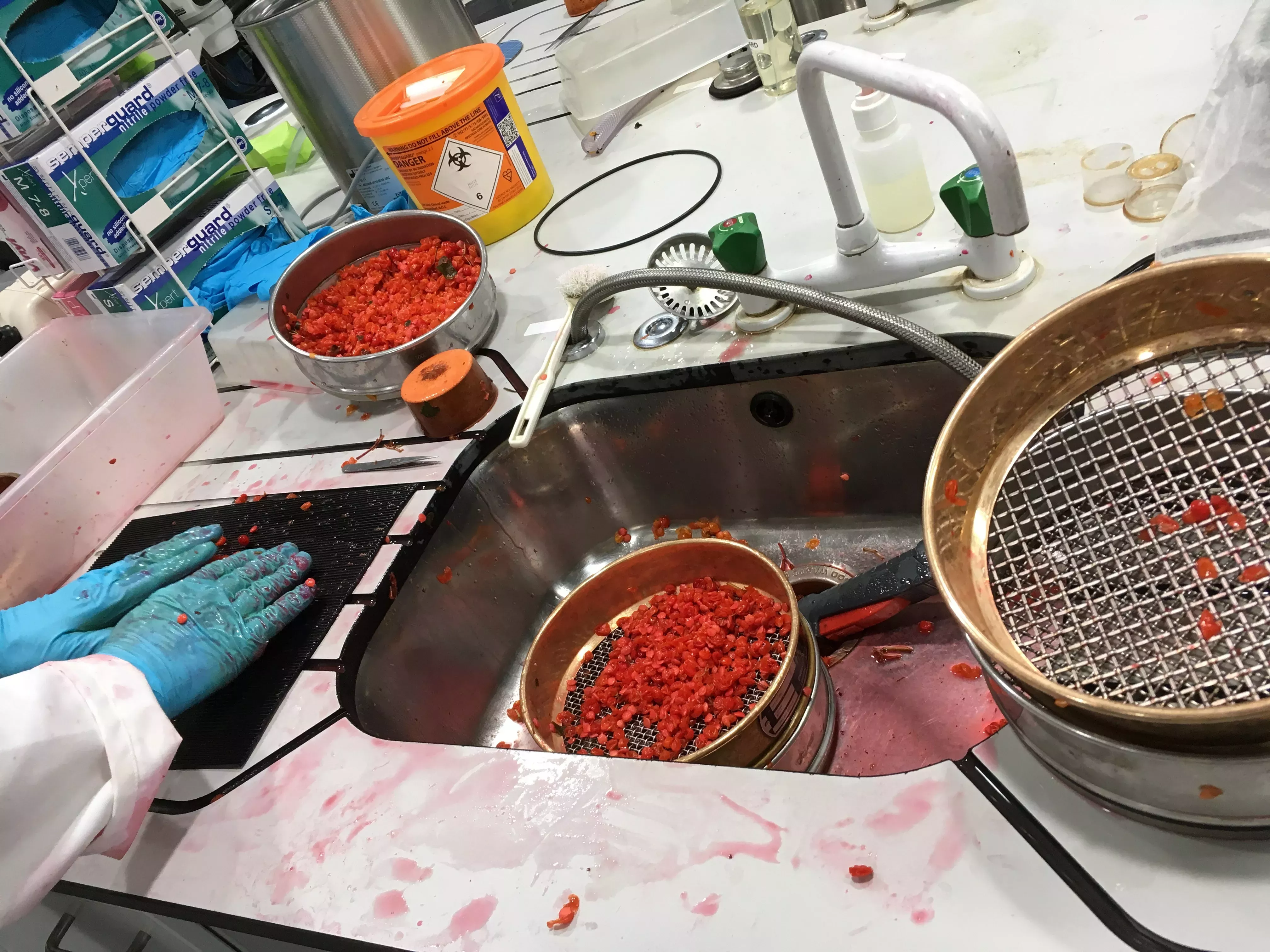

How did the UK National Tree Seed Project get on in 2018?
I can safely say, pretty well. Last year seed was collected from 37 different species; 180 seed collections contributing to 124 targets were made by 23 partner groups/organsations. Of these collections 44 per cent were of the scrub species mentioned in this blog. An upland collection (> 300m) of hazel from Cumbria and a wayfaring tree collection from exposed limestone sea cliffs in Devon were personal highlights.
Collections arrived at Kew’s Millennium Seed Bank from across the UK including over 20 collections from each of the seed zones covered by Devon, East Anglia and some areas of Scotland which is a great achievement. A smaller number of collections from some areas of the UK is expected, reflecting the limited native distribution of several target species e.g. the wayfaring tree is thought to have been introduced north of the Midlands. However, there are areas visible on the map that will become the focus of 2019’s collecting. With this the final year of the project, partners and RBG Kew staff are gearing up for a busy year. The aim is to surpass the number of targets met in 2018 and in doing so improving the genetic representativeness of our seed collections.
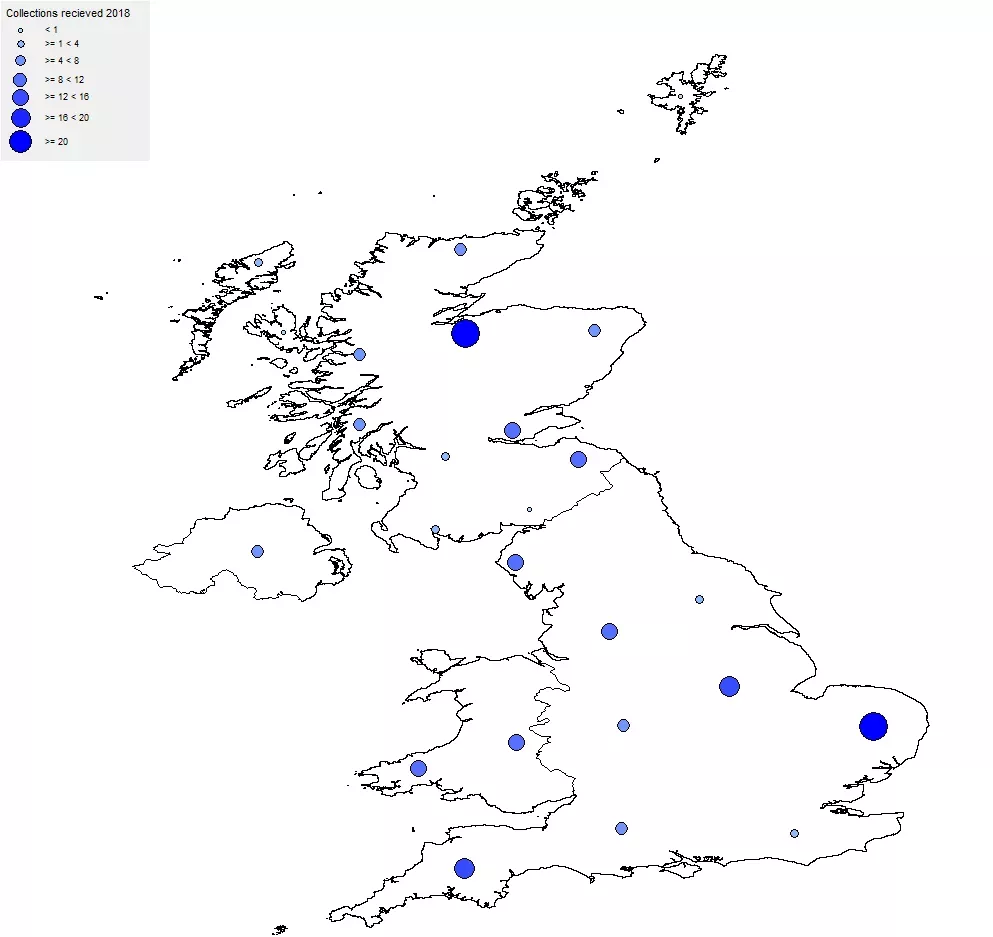
Acknowledgements
The UKNTSP is funded by players of People’s Postcode Lottery. Thanks to all my colleagues in the UK Conservation Science Team for their support.
References
Mortimer, S.R., Turner, A.J., Brown, V.K., Fuller, R.J., Good, J.E.G., Bell, S.A. Stevens, P.A., Norris, D., Bayfield, N. & Ward, L.K. (2000) The nature conservation value of scrub in Britain, August 2000, JNCC Report 308, 191 pages. ISSN 0963 8091.
Natural England (2006) The Scrub Management Handbook Section 4: Shrub species profiles. (online) Available online. [Accessed 25 January 2019].
Kurylo, J. & Endress, A.G. (2012) Rhamnus cathartica: Notes on Its Early History in North America. Northeastern Naturalist. 19(4), 601-610.
Zengion, A.H. & Yarnell, E. (2011) Pain Procedures in Clinical Practice. 3rd edt. Elsevier Health Sciences. 187-204.
Loudon, J.C. (1854) Arboretum Et Fruticetum Britannicum. 2nd edt. Henry G Bohn, London. E-book. [Accessed 25 January 2019] Available online
Dallimore, W. (1915) The Black or Berry-Bearing Alder for Gunpowder. (Rhamnus frangula, L.) Bulletin of Miscellaneous Information (Royal Botanic Gardens, Kew), Vol. 1915, No.6. 304-306.

